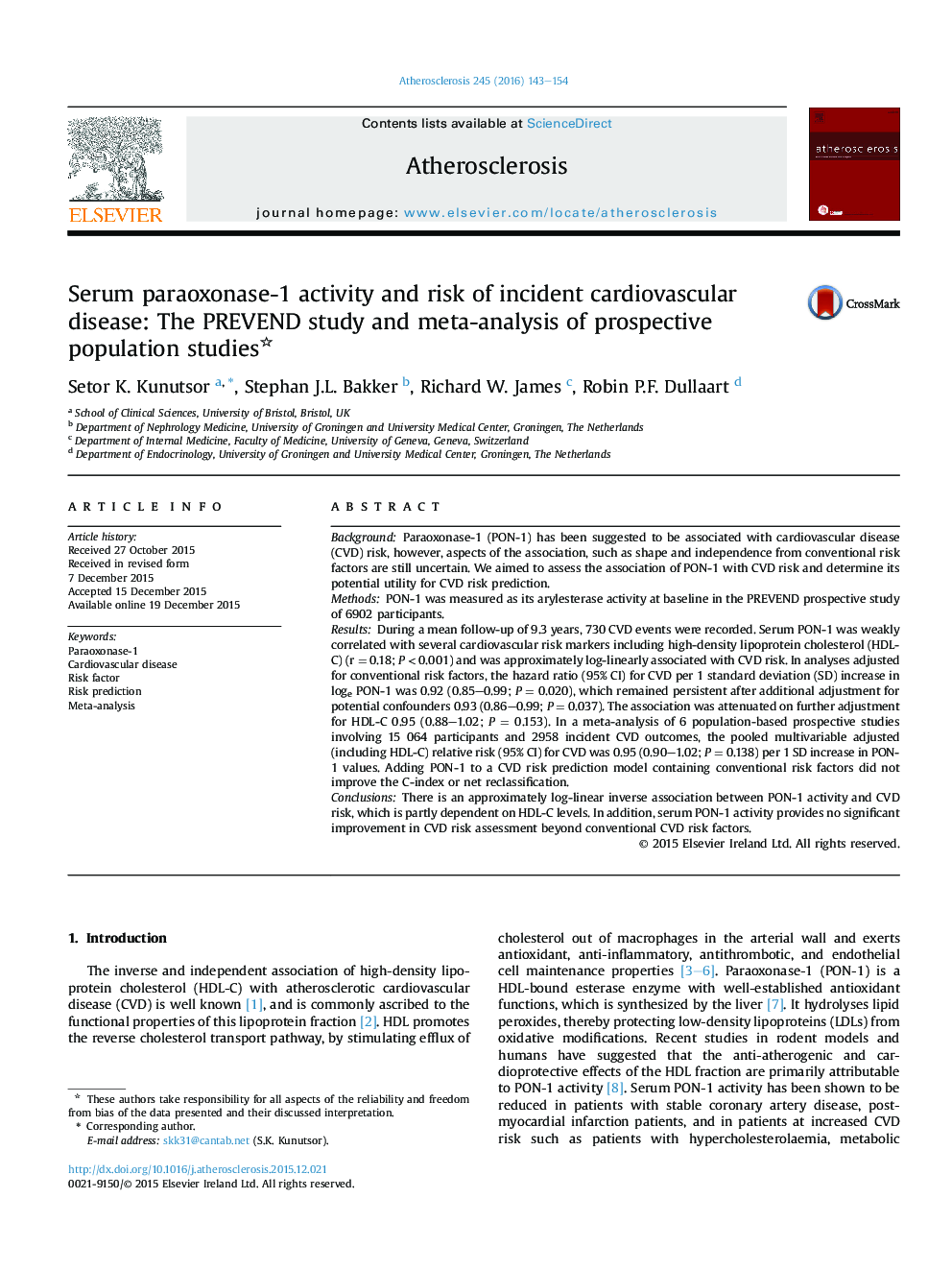| کد مقاله | کد نشریه | سال انتشار | مقاله انگلیسی | نسخه تمام متن |
|---|---|---|---|---|
| 5943574 | 1574720 | 2016 | 12 صفحه PDF | دانلود رایگان |

- PON-1 is approximately log-linearly and inversely associated with CVD risk.
- The PON-1-CVD association is partly dependent on HDL-C levels.
- The PON-1-CVD association is consistent across several clinical subgroups.
- In the general population, PON-1 is unlikely to improve CVD risk prediction.
BackgroundParaoxonase-1 (PON-1) has been suggested to be associated with cardiovascular disease (CVD) risk, however, aspects of the association, such as shape and independence from conventional risk factors are still uncertain. We aimed to assess the association of PON-1 with CVD risk and determine its potential utility for CVD risk prediction.MethodsPON-1 was measured as its arylesterase activity at baseline in the PREVEND prospective study of 6902 participants.ResultsDuring a mean follow-up of 9.3 years, 730 CVD events were recorded. Serum PON-1 was weakly correlated with several cardiovascular risk markers including high-density lipoprotein cholesterol (HDL-C) (r = 0.18; P < 0.001) and was approximately log-linearly associated with CVD risk. In analyses adjusted for conventional risk factors, the hazard ratio (95% CI) for CVD per 1 standard deviation (SD) increase in loge PON-1 was 0.92 (0.85-0.99; P = 0.020), which remained persistent after additional adjustment for potential confounders 0.93 (0.86-0.99; P = 0.037). The association was attenuated on further adjustment for HDL-C 0.95 (0.88-1.02; P = 0.153). In a meta-analysis of 6 population-based prospective studies involving 15 064 participants and 2958 incident CVD outcomes, the pooled multivariable adjusted (including HDL-C) relative risk (95% CI) for CVD was 0.95 (0.90-1.02; P = 0.138) per 1 SD increase in PON-1 values. Adding PON-1 to a CVD risk prediction model containing conventional risk factors did not improve the C-index or net reclassification.ConclusionsThere is an approximately log-linear inverse association between PON-1 activity and CVD risk, which is partly dependent on HDL-C levels. In addition, serum PON-1 activity provides no significant improvement in CVD risk assessment beyond conventional CVD risk factors.
Journal: Atherosclerosis - Volume 245, February 2016, Pages 143-154